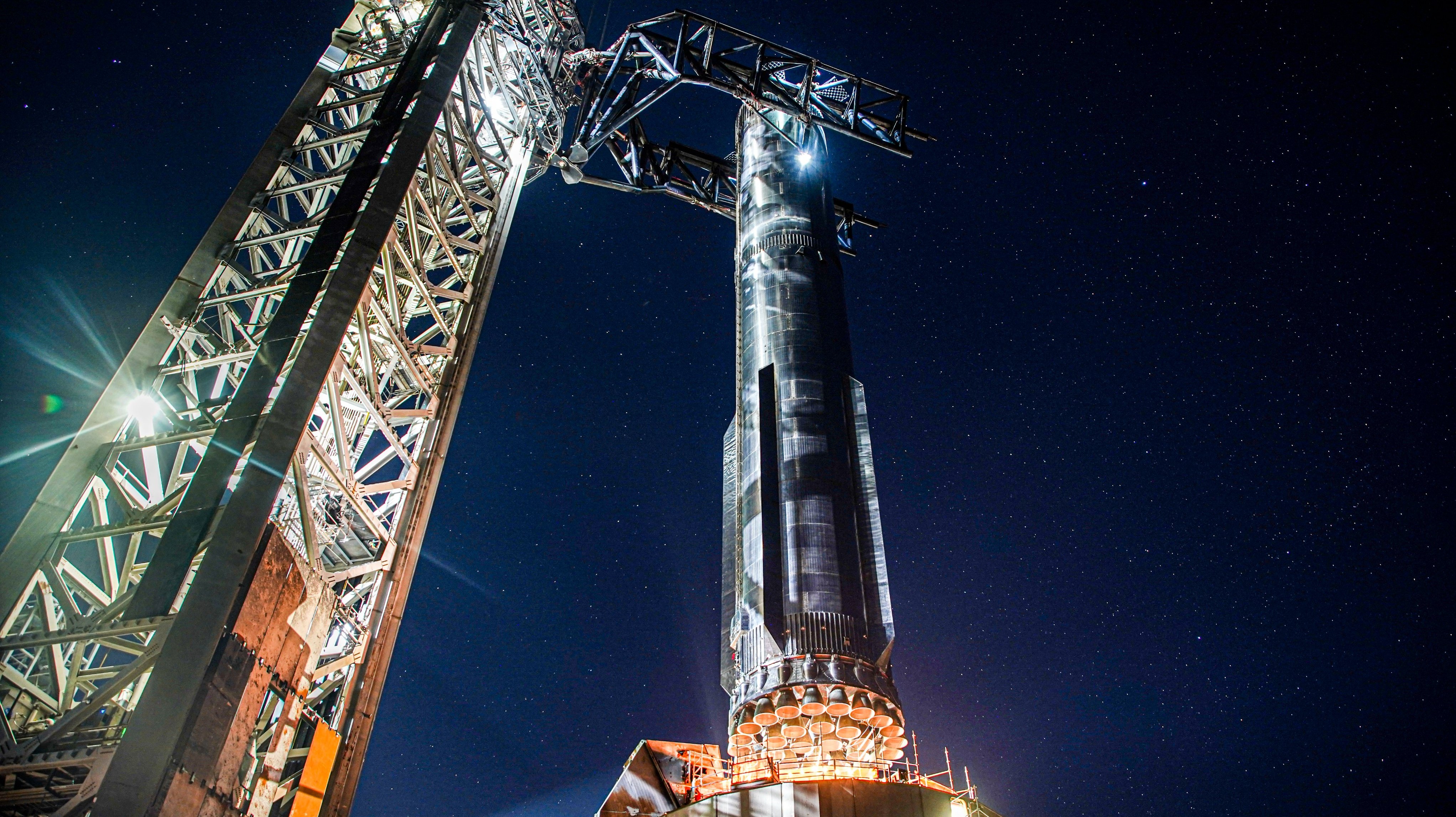Gorgeous photos show SpaceX's next Starship Super Heavy booster on the launch pad

Here are a couple of rocket glory shots for you.
SpaceX just rolled Booster 9, the latest iteration of its Starship Super Heavy vehicle, out to the launch pad at its Starbase facility in South Texas to gear up for a planned test flight.
On Friday (July 21), SpaceX posted two photos on Twitter that capture the very end of that process.
Related: Relive SpaceX's explosive 1st Starship test in incredible launch photos
One of the photos shows the giant vehicle being lowered onto the orbital launch mount. Most of its 33 Raptor engines are visible, hit by upward-facing orange light that makes it look as if they're firing.
Booster 9 is nestled atop the mount in the second shot, its Raptors hidden by the launch infrastructure. In both photos, the dark South Texas skies sparkle with hundreds of stars.
Starship is SpaceX's next-generation transportation system, which the company is developing to get cargo and people to the moon, Mars and beyond. The vehicle consists of two fully reusable elements: Super Heavy and a 165-foot-tall (50 meters) upper-stage spacecraft called Starship.
Breaking space news, the latest updates on rocket launches, skywatching events and more!
A fully stacked Starship has flown just once to date, on an April 20 test flight that aimed to send the upper stage much of the way around Earth. (The desired outcome was a splashdown near Hawaii.) But the vehicle suffered several anomalies shortly after liftoff, and SpaceX sent a self-destruct command, which took effect four minutes into flight, when Starship was over the Gulf of Mexico.
Booster 9 will be paired with the Ship 25 upper-stage prototype for the coming test flight, which will have similar aims as the first one. The test mission could launch as soon as this summer, SpaceX founder and CEO Elon Musk has said, but that assumes no regulatory issues hold the liftoff up.
And that's certainly not a given; a coalition of environmental groups is current suing the U.S. Federal Aviation Administration, claiming the agency didn't properly assess the damage that Starship could inflict on the South Texas ecosystem.

Michael Wall is a Senior Space Writer with Space.com and joined the team in 2010. He primarily covers exoplanets, spaceflight and military space, but has been known to dabble in the space art beat. His book about the search for alien life, "Out There," was published on Nov. 13, 2018. Before becoming a science writer, Michael worked as a herpetologist and wildlife biologist. He has a Ph.D. in evolutionary biology from the University of Sydney, Australia, a bachelor's degree from the University of Arizona, and a graduate certificate in science writing from the University of California, Santa Cruz. To find out what his latest project is, you can follow Michael on Twitter.

